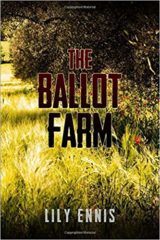Maria
Submitted

Seaton’s War
Seaton’s War is a story of love, secrets and lies set in a sleepy New Zealand town in the latter half of WWII. When a Japanese submarine beaches the residents are shocked that the Pacific War has come to them. To some the event brings opportunity for personal gain or for genuine war work. For Kitty Williams it is a chance to prove she can do more for the war effort than knit socks for Red Cross parcels.
Taking a stand against the establishment Kitty teaches the POWs English with the intention of learning enough Japanese to be able to intercept their radio transmissions.
When Kitty makes an unusual find she confides in physicist Dr. Robert Anderson, who operates a direction finder, tracking movements of ships and submarines in the Pacific. But all is not as it seems with the shy academic and Kitty begins to question where his sympathies lie. Too late she realises she has fallen in love with him.
As Kitty immerses herself in her work, her landlady Rowena struggles with the fact that her husband John is incarcerated in German occupied Poland. Rowena’s unorthodox method of dealing with her situation is a source of tension between her and Kitty.
Woven through the book is Kitty’s relationship with her best friend Maybelle who has left Seaton to work for Navy Communications. She provides Kitty with a different slant on the events in Seaton through newspaper clippings and letters, and she regales Kitty about life in the city now the Americans have arrived.
The Pacific War, secret liaisons, the spy game and the quest for liberation in Europe weave seamlessly through Seaton’s War. As Kitty battles for personal recognition she puts her life on the line for love, honour and above all, integrity.

The Ballot Farm
Mangaparua was one of the last areas in New Zealand to be opened up.
George Malder and his new bride, Catherine, take up a newly surveyed bush section in the back blocks between Raetihi and the Wanganui River. As a returned World War I soldier George won the right to create a farm with a government grant and the promise of further assistance. They endeavour to establish a home and turn the virgin bush into a productive sheep farm.
They are joined by other discharged soldiers, all of whom battle demons. The community bonds quickly, these friends made for life, accepting each person’s oddities.
Already damaged by the war George struggles to be the man society expects of him. He is stoic in the face of the adversity he experiences daily and he is optimistic in the extreme.
Catherine, bewildered by the isolation, finds strength in her faith in George. Of special consolation to her is Iris, Catherine’s sister-in-law and best friend.
Gender roles are firmly established when the first babies arrive; the men farm and the women keep the home fires burning. There are no options.
The isolation of the fledging settlement challenges them in ways they never expect as tragedy after tragedy unfolds. Omnipotent behind the personal stories is the struggle to turn the land into the farms that the government expect.
George wrestles with feelings of despair as he realises the inadequacy of his efforts. But George is reluctant to sever the ties he’s made with this land.
The book draws on events surrounding the ballot farm scheme in this beautiful back country. Nowhere, in the whole of New Zealand, could it have been so difficult to make a farm.
